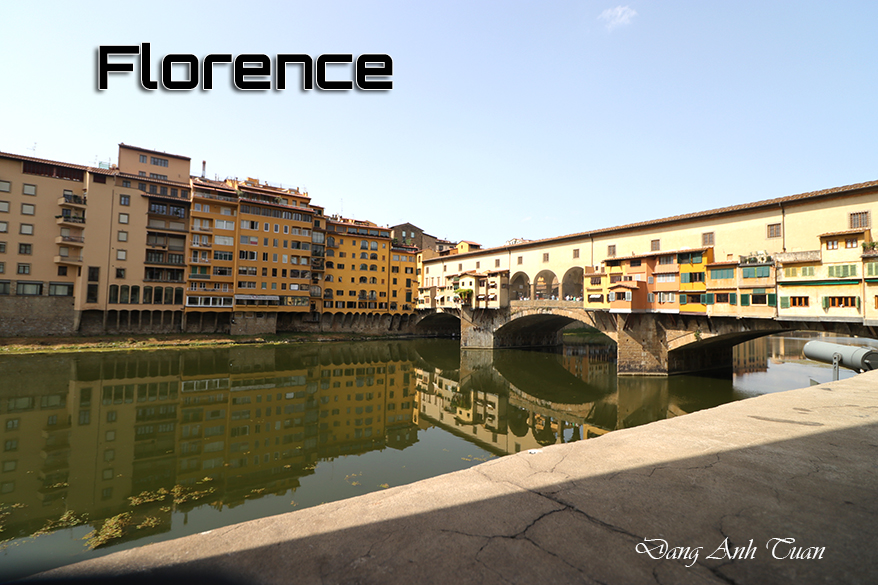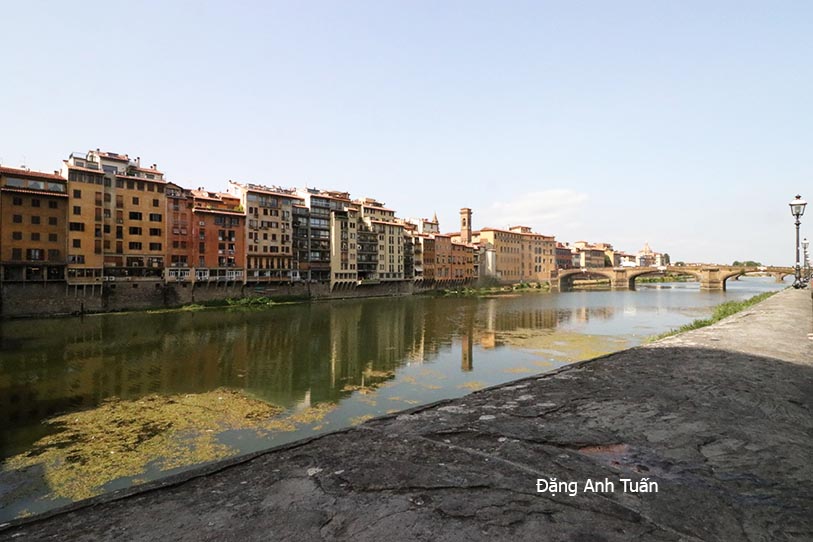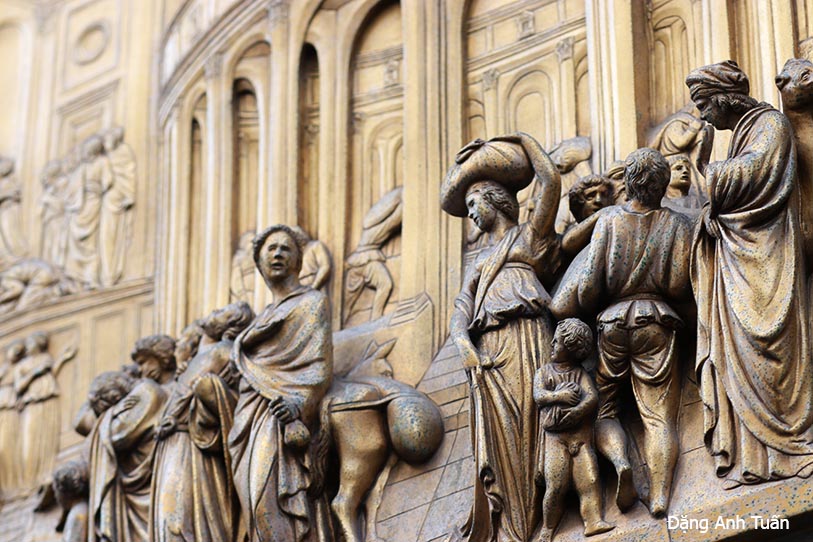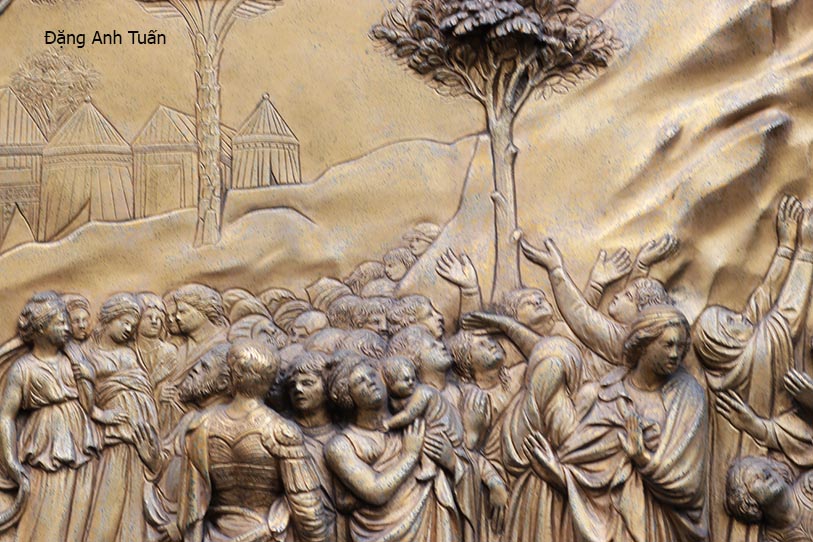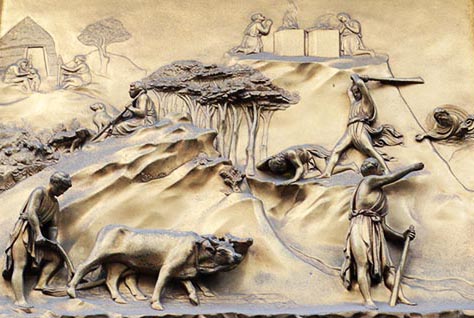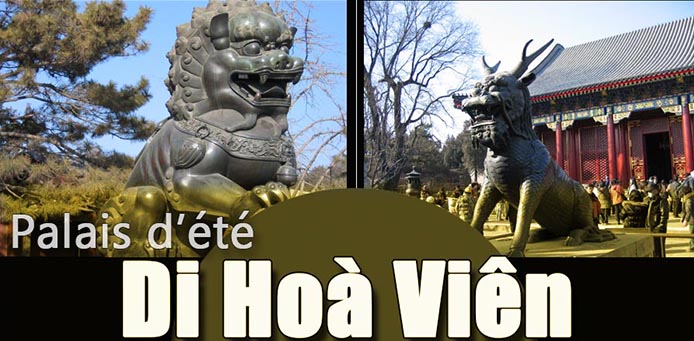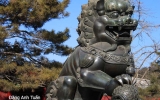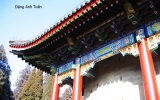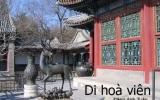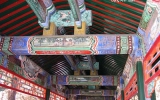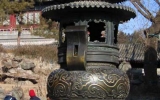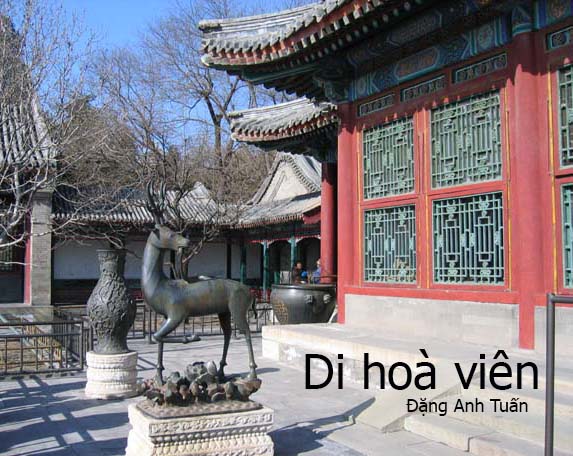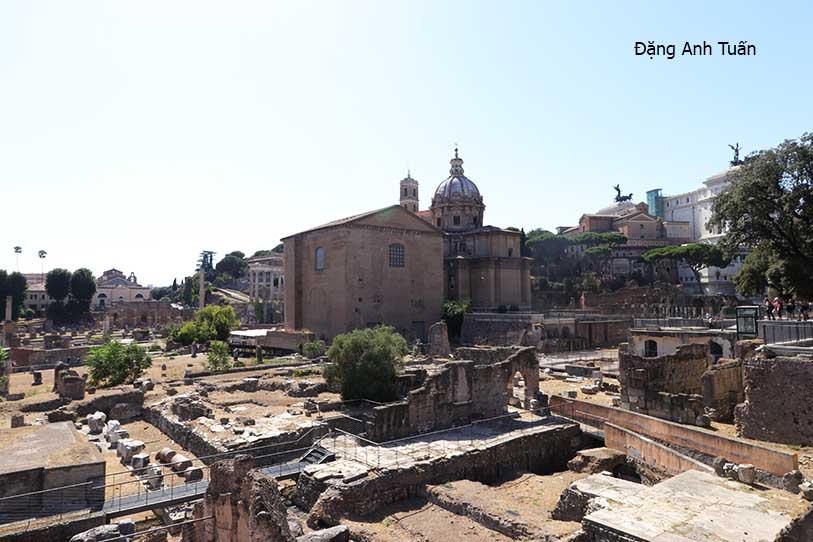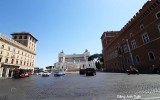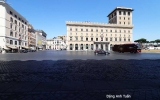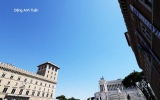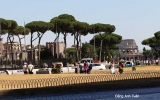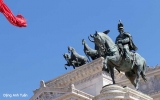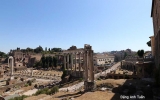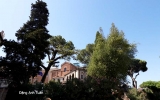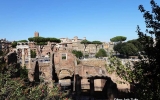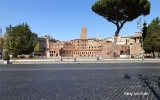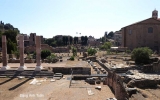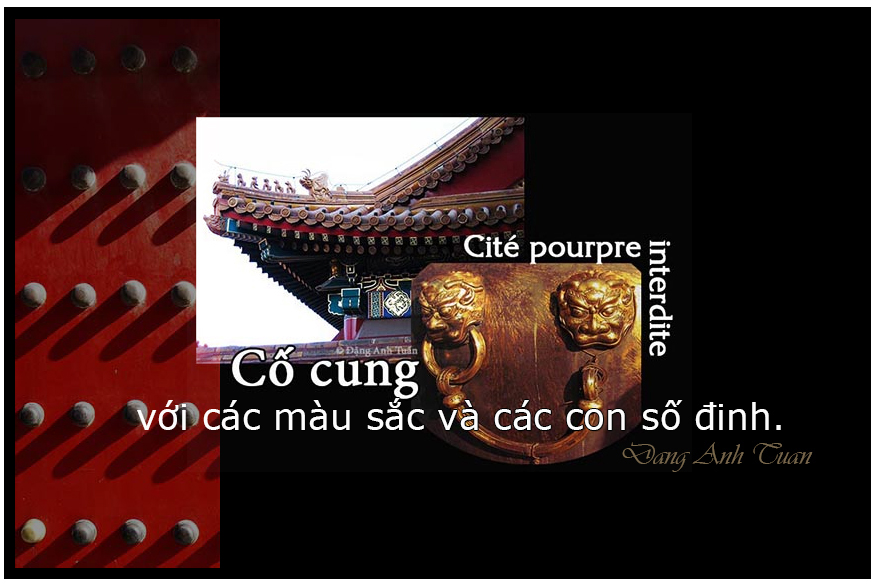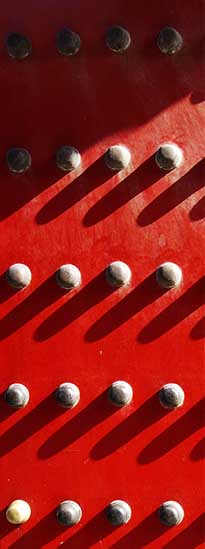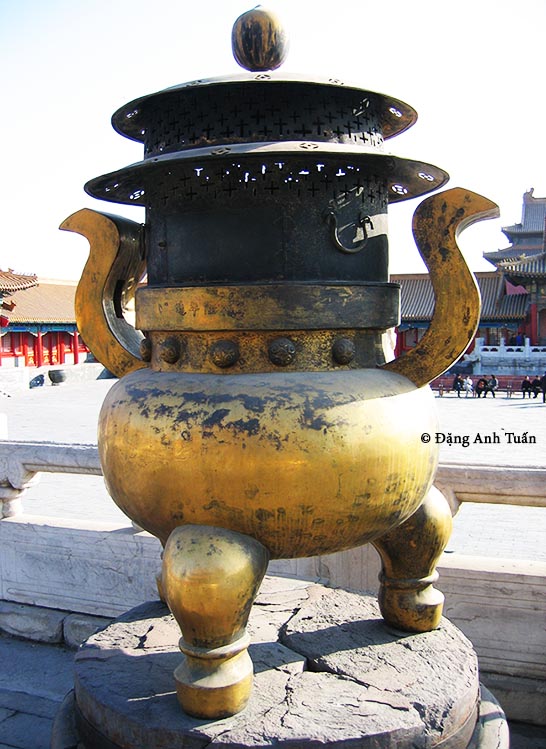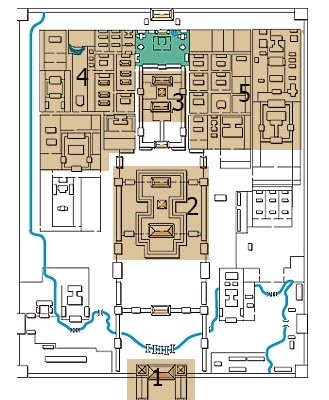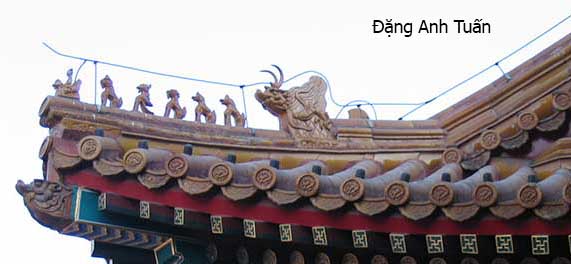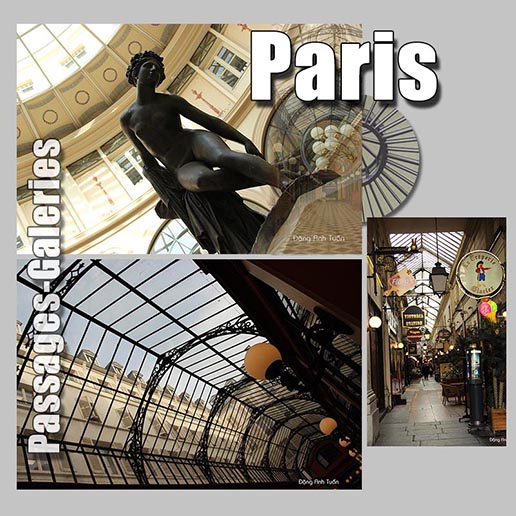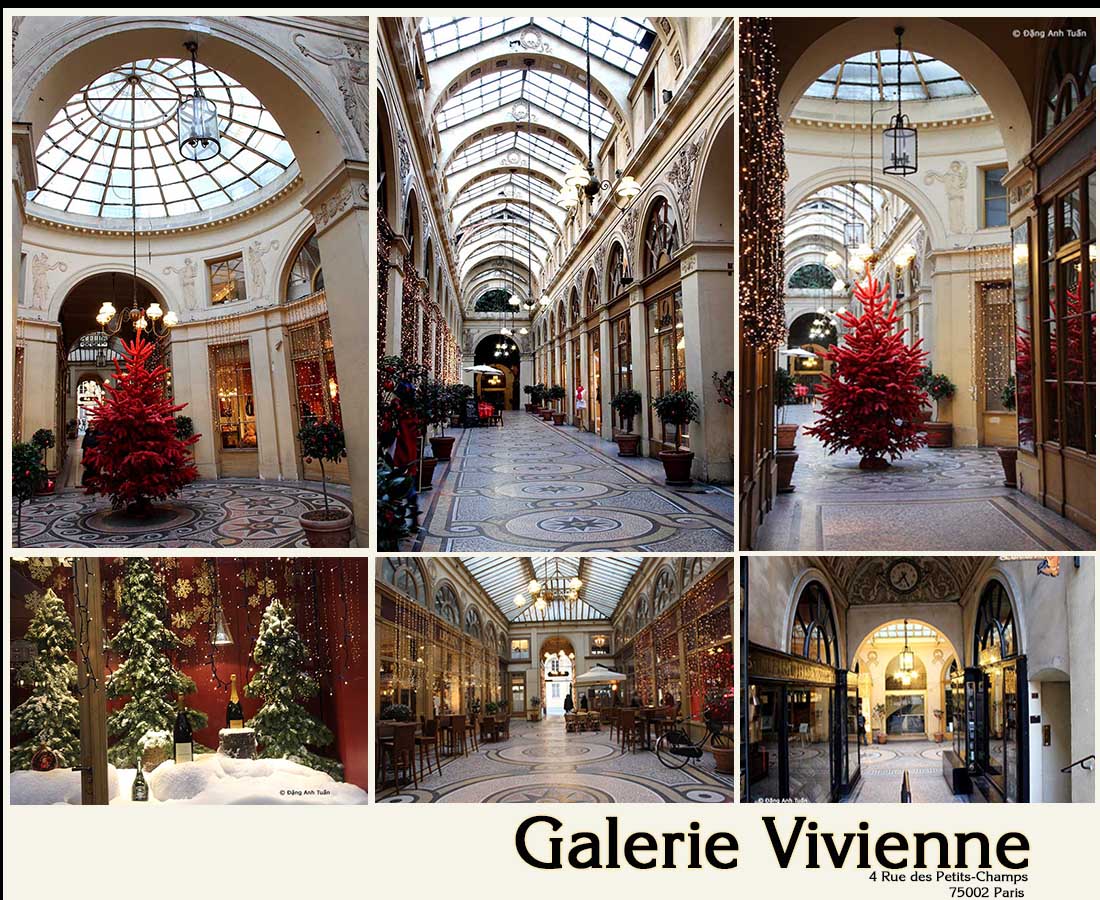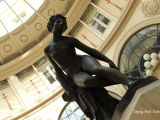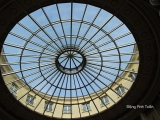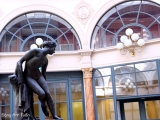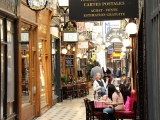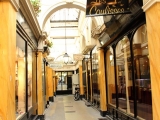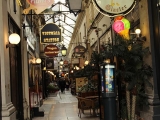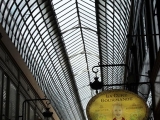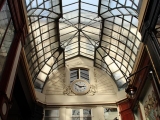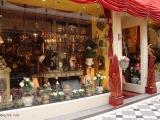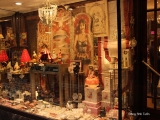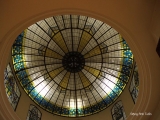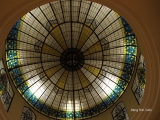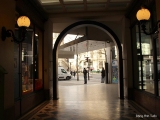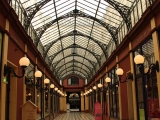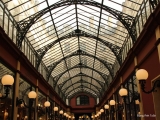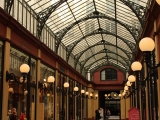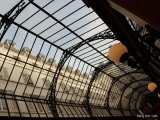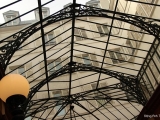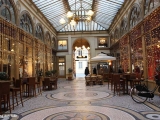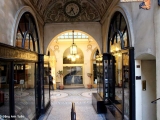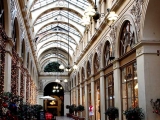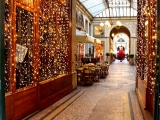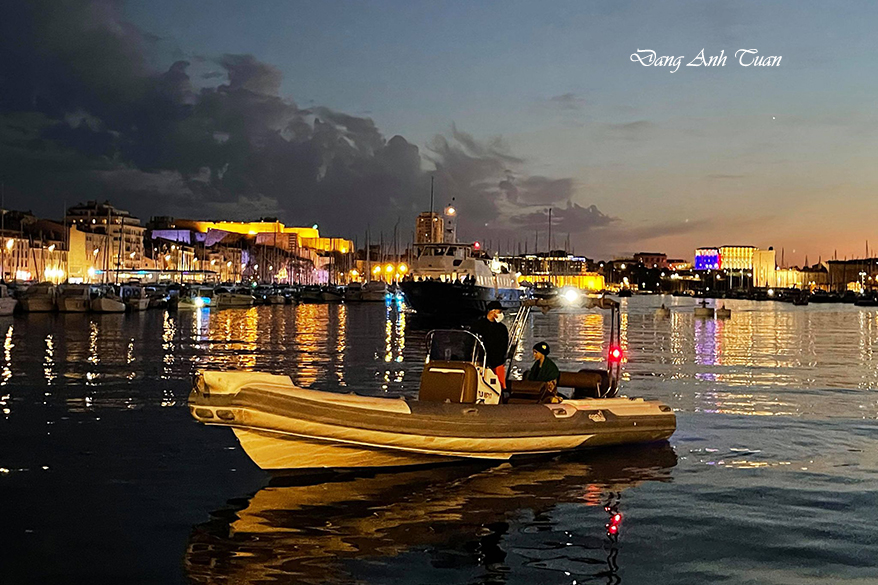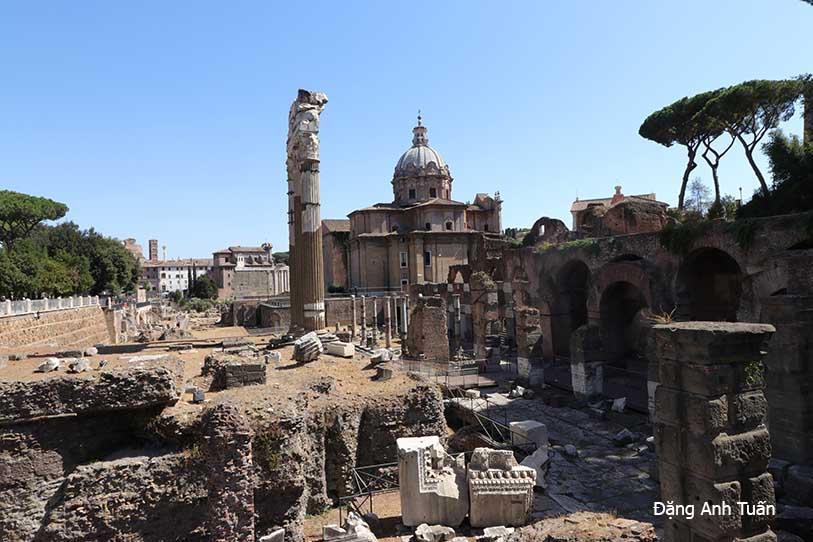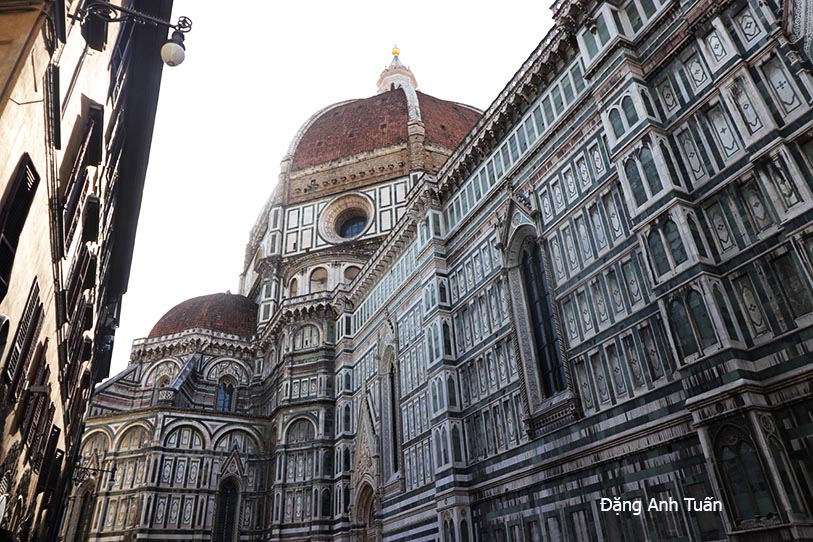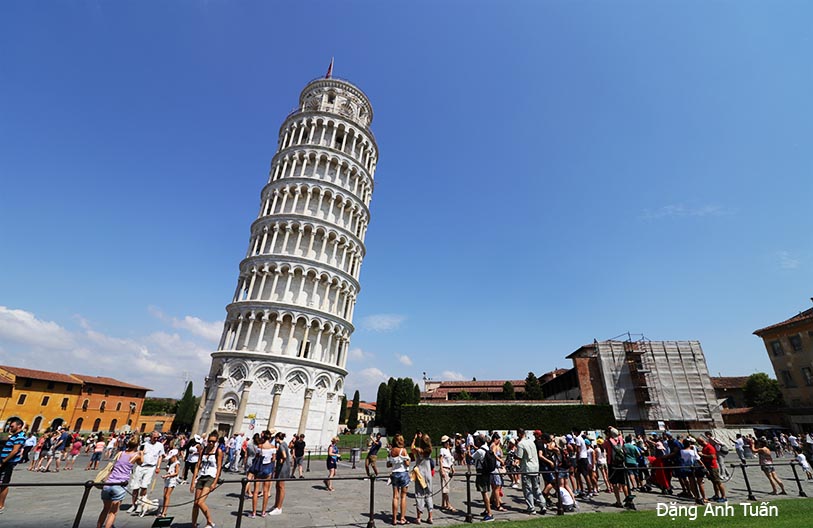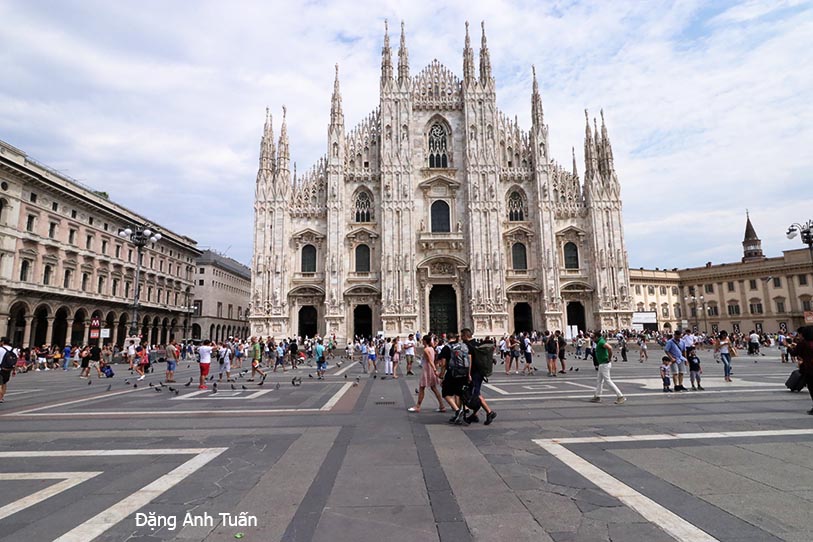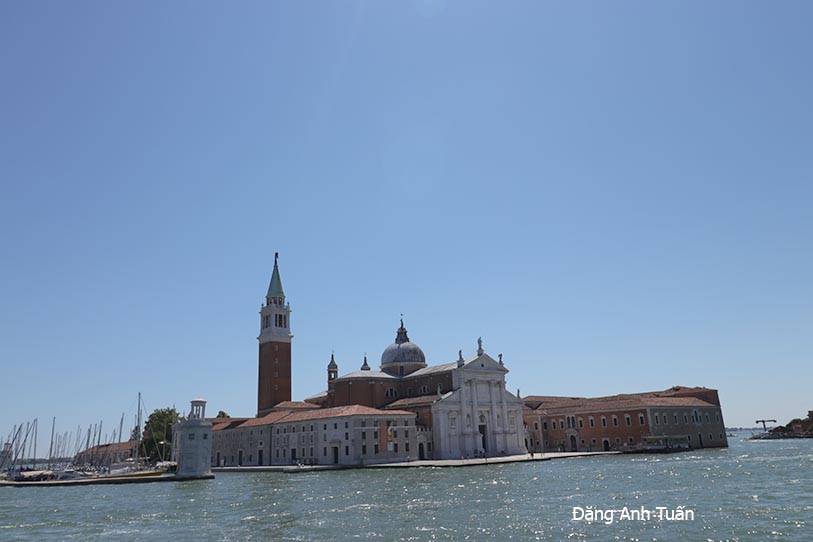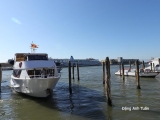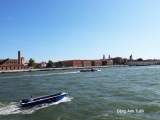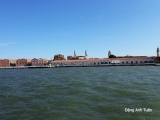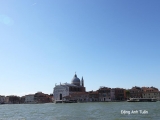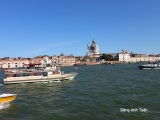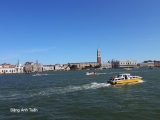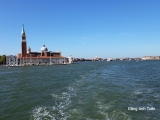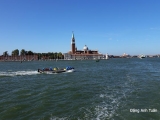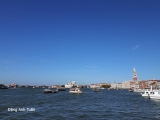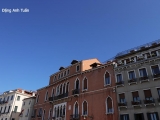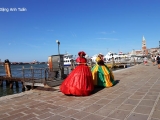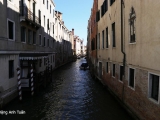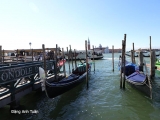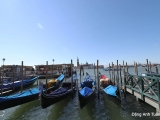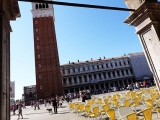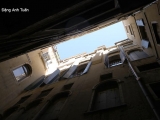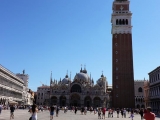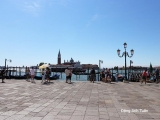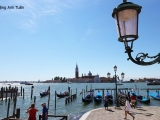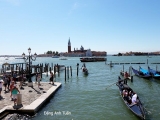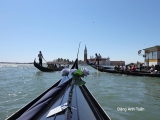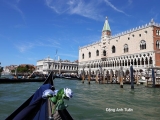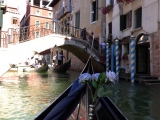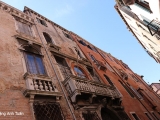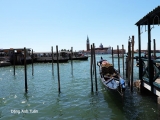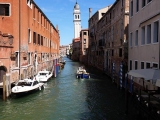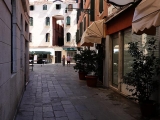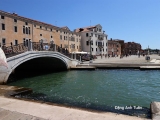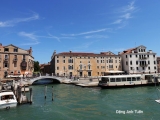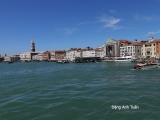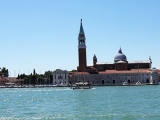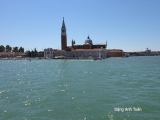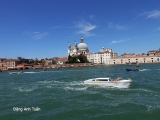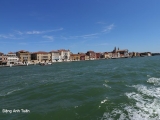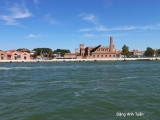
Version française
Version anglaise
Galerie des photos
Thường được gọi là thành phố trên mặt nước , Venise được ra đời vào thế kỷ thứ 5 sau khi Đế chế La Mã bị sup đổ. Người dân ở đất liền tìm những vùng lân cận có đầm lầy như các hòn đảo cát Torcello, Iesolo và Malamocco để trốn tránh các người phương bắc, người Hun và cần một nơi như Venise có một vị trí để bảo đảm có nước và trong trường hơp bị vây hảm có sự tiếp tế dễ dàng và nhất là nước là hàng rào thiên nhiên chống địch. Venise vì nằm trên nhiều hòn đảo nhỏ nên được có vô số các cầu nổi. Sự xây cất nhà cửa cũng tùy thuộc tầm vóc của các căn nhà trọng đại nặng nhẹ hay không. Nếu căn nhà không nặng chi cho mấy thì được xây cất trực tiếp trên đất liền. Còn nếu không thì cần các cộc gỗ (pali) được cắm sâu vào nền đất cứng (carento) để cũng cố nền đất trước khi dựng sau đó một sàn gổ (plancher) dày hay mỏng và công việc xây cất được bất đầu với gạch (briques). Đôi khi còn cần phải tính toán trù liệu sự gặm mòn nước biển với các tòa nhà gần ven sông. Bởi thế đá đặc Istrie, một loại đá trắng có tiếng là bền, đến từ vùng Balkans được trọng dùng qua nhiều thế kỷ.
Để giới hạn trọng lượng của các căn nhà, thường thấy có rất nhiều cửa sổ trên các mặt chính bằng đá , các sườn nhà bằng gỗ sồi thường đúc trong vôi vữa (mortier), các xà nhà (poutres) cũng như các rầm (solives) đều dùng để hấp thụ tất các chuyển động xuất phát từ sự hoạt động địa chấn ở phá (lagune). Khách du lịch ngoại quốc đi theo tour thường được cư trú ở ngoại ô vì ở trung tâm thành phố, giá khách sạn quá đắt đỏ một đêm có thể lên đến cả ngàn euro. Vì vậy sáng phải lấy tàu đi vào thành phố, có dịp cho tớ chụp hình thỏa mái. Đến đây không đi thuyền gondole, là mất đi niềm vui trọng đại vì bạn có dịp ngắm cảnh trong thành phố Venise qua các con kênh nho nhỏ và các ngóc ngách mà không thể nào biết khi đi bộ. Đến đây cũng không nên quên cái cầu than thở bằng gạch trắng Istrie với phong cách baroque, một cái cầu mà bao nhiêu người trước khi bị hành quyết phải đi qua. Cái cầu nầy thông đến toà án Des Doges ở quảng trường Saint Marc, có đôi hành lang và hai hướng khác nhau, một hướng là đi đến ngục tù tối ẩm thấp còn hướng kia thì đến các phòng « chì » sẻ bị ghẹt thở bởi sức nóng từ các bản chì phủ kín của các mái nhà.
Đây là một « quan tài biết bay » , đó là cái tên mà nhà văn hào Pháp André Suarès dùng khi nói đến cái cầu nầy. Venise cũng là thành phố quê hương của Marco Polo, một thương gia thám hiểm nổi tiếng đã mang về, theo một giã thuyết, cách làm mì từ Trung Hoa dưới thời nhà Nguyên của Đại Hãn Hốt Tất Liêt ở đầu thế kỷ 13. Nhưng trong quyển sách tựa đề « La cuicina italiana » , ông Giuseppe Mantovano có lưu ý rằng tất cả loại mì đã có trước khi Marco Polo trở về. Như vậy có thể một loại mì nào đấy thời đó không có ở Venise được mang về không? Ở Ý , lúc nào trong menu của buổi cơm tối ở khách sạn Ý là cũng có pasta (hay pâte), đó là món ăn đầu tiên mà tớ được ăn hai ngày liên tiếp.
Version française
Connue souvent comme une ville bâtie sur l’eau, Venise prit naissance au Vème siècle après la la chute de l’empire romain. Les habitants vivant sur terre cherchèrent les alentours des régions marécageuses comme les îlots Torcello, Iesolo và Malamocco pour trouver refuge et fuir les gens du Nord , les Hun et choisirent Venise comme le lieu idéal pour son eau, un barrage naturel contre les ennemis et une nécessité primordiale en cas de siège et de ravitaillement. Étant étendue sur plusieurs îlots, Venise possède un grand nombre de ponts. Le choix de la construction des bâtisses est lié étroitement à leur taille imposante ou non. Si elle a une stature légère, elle est construite directement sur le sol. Par contre, pour les édifices plus élevés et plus imposants, on a besoin de consolider et soutenir leur fondation par la plantation des pieux (palis) de deux à quatre mètres enfoncés jusqu’à l’atteinte de la couche de la terre solide (carento) avant d’installer le plancher de bois plus ou moins épais avant de mettre en place la maçonnerie en briques. Parfois, il est nécessaire de prévoir la corrosion entamée par l’eau de mer pour les bâtisses au bord des rivières. C’est pourquoi la pierre compacte d’Istrie, connue pour sa résistance et provenant des Balkans est utilisée au fil des siècles.
Pour limiter le poids de ces bâtisses, on est habitué à installer un grand nombre de fenêtres sur des façades en marbre, à employer des charpentes coulées dans le mortier, à utiliser et à assembler des poutres et des solives dans le but d’absorber les variations sismiques dans la lagune et à rendre ces bâtisses plus résistantes en les alignant côte à côte en cas des secousses telluriques. La plupart des circuits touristiques proposent des hôtels situés souvent aux alentours de Venise car le prix d’une chambre dans le centre de Venise est très élevé, pouvant atteindre jusqu’à un millier d’euros. C’est pour cette raison qu’il faut prendre l’embarcation pour atteindre le centre-ville de Venise. C’est aussi une occasion unique pour moi de pouvoir prendre des photos à ma guise. En venant à Venise, on ne peut pas se passer des gondoles car c’est un plaisir inouï de nous permettre de découvrir Venise au fil de l’eau dans les recoins.
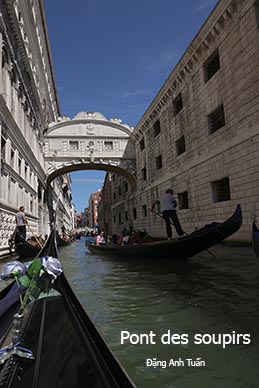
On ne peut pas oublier non plus le pont des Soupirs en marbre blanc d’Istrie de style baroque, un pont que les prisonniers ont dû emprunter avant la sentence. Donnant accès au palais des Doges, ce pont possédait deux couloirs dans deux directions différentes, l’un emmenant le condamné dans un cachot humide et tout sombre et l’autre dans des cellules où le prisonnier serait suffoqué rapidement par l’excès de la chaleur emmagasinée dans les toits recouverts de plaques en plomb. C’est le « sarcophage qui s’envole », une expression employée par l’écrivain français André Suarès pour désigner ce pont. Venise c’est aussi la ville natale du marchand explorateur célèbre Marco Polo. Selon une vieille légende toujours tenace jusqu’à aujourd’hui, c’est lui qui aurait introduit les pâtes en Italie après les avoir ramenées de Chine au début de la dynastie des Yuan (Kubïlai Khan).
Mais dans son ouvrage intitulé « La cuicina italiana« , Giuseppe Mantovano a noté que plusieurs sortes de pâtes étaient déjà présentes avant le retour de Marco Polo. Peut-être y a-t-il une variété de pâte inconnue ramenée à cette époque à Venise? En Italie, dans le menu du dîner proposé par les hôtels italiens, il y a toujours du pasta (pâte). C’est le plat d’entrée que j’ai eu deux jours de suite dans les hôtels italiens.
Version anglaise
Often known as a city built on water, Venice was born in the 5th century after the fall of the Roman Empire. The inhabitants living on land sought refuge in the surrounding marshy regions such as the islets of Torcello, Iesolo, and Malamocco to escape the people from the North, the Huns, and chose Venice as the ideal place for its water, a natural barrier against enemies and a vital necessity in case of siege and supply. Being spread over several islets, Venice has a large number of bridges. The choice of building construction is closely linked to their imposing size or not. If it has a light stature, it is built directly on the ground. However, for taller and more imposing buildings, it is necessary to consolidate and support their foundation by driving piles (palisades) two to four meters deep until reaching the solid earth layer (carento) before installing the wooden floor, more or less thick, before setting up the brick masonry. Sometimes, it is necessary to anticipate corrosion caused by seawater for buildings on the riverbanks. That is why the compact Istrian stone, known for its resistance and coming from the Balkans, has been used over the centuries.
To limit the weight of these buildings, it is common to install a large number of windows on marble facades, to use frameworks cast in mortar, to use and assemble beams and joists in order to absorb seismic variations in the lagoon and to make these buildings more resistant by aligning them side by side in case of earthquakes. Most tourist circuits offer hotels often located around Venice because the price of a room in the center of Venice is very high, reaching up to a thousand euros. For this reason, it is necessary to take a boat to reach the city center of Venice. It is also a unique opportunity for me to be able to take photos at my leisure. When coming to Venice, one cannot do without gondolas as it is an incredible pleasure to allow us to discover Venice along the waterways and in its nooks and crannies.
One cannot forget either the Bridge of Sighs made of white Istrian marble in Baroque style, a bridge that prisoners had to cross before sentencing. Providing access to the Doge‘s Palace, this bridge had two corridors going in two different directions, one leading the condemned to a damp and very dark dungeon, and the other to cells where the prisoner would quickly suffocate from the excess heat stored in the roofs covered with lead plates. It is the « flying sarcophagus, » an expression used by the French writer André Suarès to refer to this bridge. Venice is also the birthplace of the famous merchant explorer Marco Polo. According to an old legend still persistent today, he was the one who introduced pasta to Italy after bringing it back from China at the beginning of the Yuan dynasty (Kublai Khan).
But in his work entitled « La cucina italiana, » Giuseppe Mantovano noted that several types of pasta were already present before Marco Polo’s return. Perhaps there is a variety of pasta unknown brought to Venice at that time? In Italy, on the dinner menu offered by Italian hotels, there is always pasta. It is the starter dish I had two days in a row in Italian hotels.
Thành phố của các kênh đảo
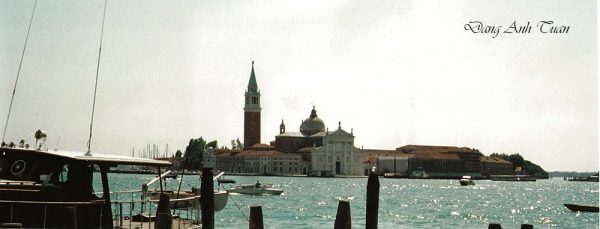
[Return ITALIE]

